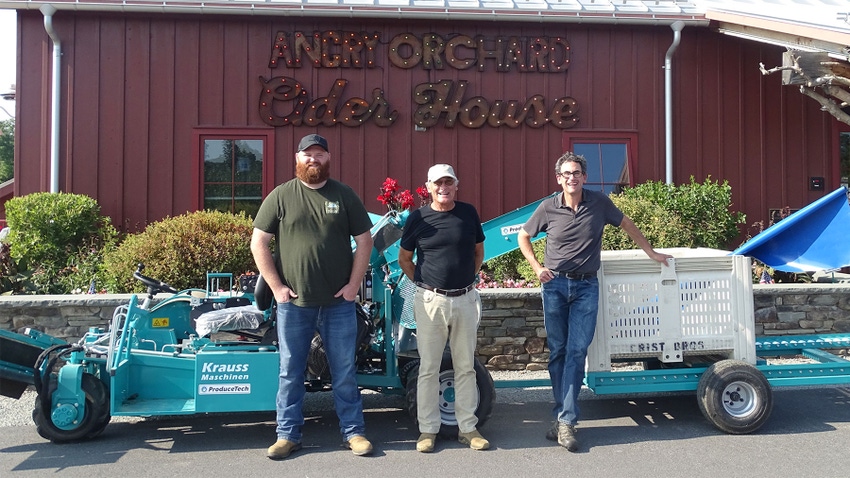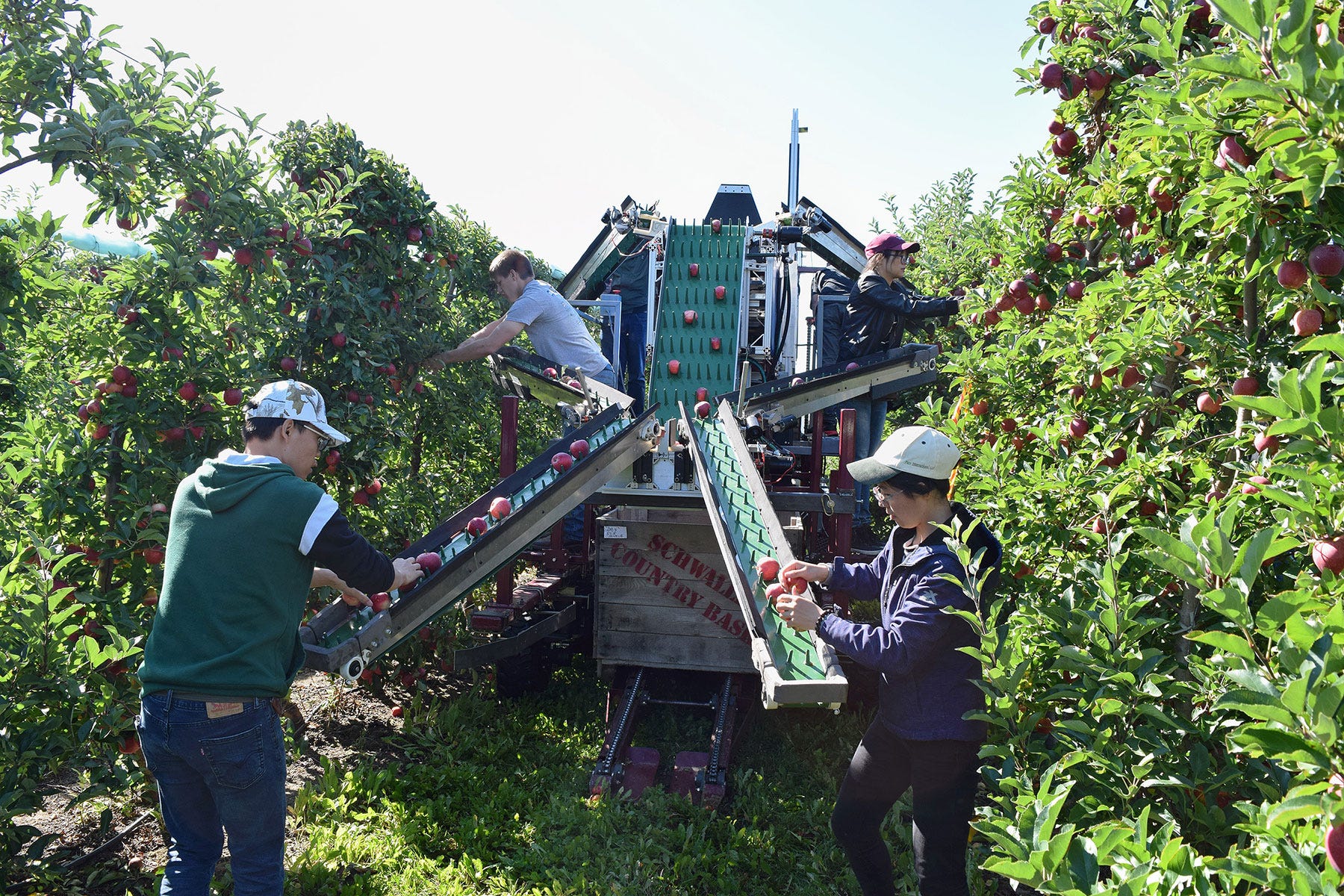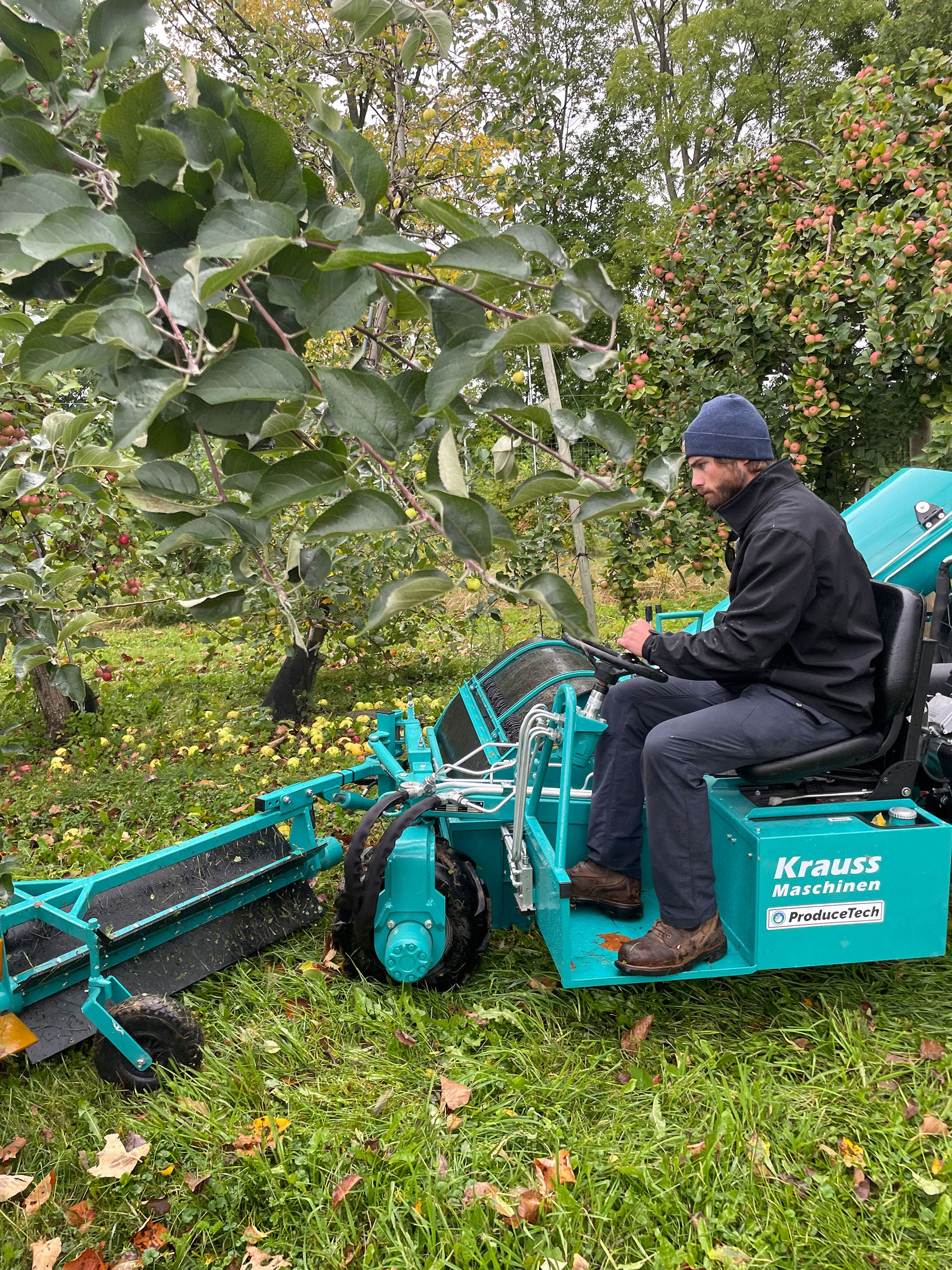September 28, 2023

The cider industry in New York state has seen unprecedented growth of more 2,400% over the past 10 years, and it now has a $1.7 billion total economic impact to the New York state economy, according to a 2020 Economic Impact Study conducted by the New York Cider Association.
Gregory Peck, an associate professor of horticulture at Cornell University, says the demand for hard cider has created a domestic supply gap for specialized cider apple varieties.
“The demand is such that concentrated apple juice made from these specialized apples is being imported from Europe,” Peck says.
With funding from the New York Farm Viability Institute, Peck has added to the knowledge base on harvest mechanization, which may help New York growers respond to demand for homegrown cider apple varieties.
Cider-makers’ preferred varieties are often bitter or acidic when eaten fresh, but these also contribute desirable flavor profiles to premium hard cider products.
Last year, Peck’s research lab published a cost comparison of mechanical harvesting of cider apples at different farm scales. The range of equipment evaluated included cable and hydraulic tree shakers — and small, medium and large mechanical harvesters for use on orchards — from 2.5 acres to more than 100 acres.
For growers focused on cider varieties, mechanical harvesting uses various pieces of equipment that shake, windrow, collect and move apples from the orchard floor into bins or a trailer. Some equipment further sifts out the leaves and sticks collected with the apples.
Cost comparison
Right now, New York has about 120 apple growers making more than 5 million gallons of cider annually, according to the New York Cider Association.
Labor to harvest apples is the largest expense for orchard operators. Peck estimates that the cost of hand labor is anywhere from $700 to $2,000 per acre, with 0.17 to 0.45 tons of apples harvested per hour.
“Our research indicates that mechanical harvest of hard cider apples offers economic advantages over hand-harvesting no matter the orchard size,” he says. “Our work to date shows it can be profitable if the equipment is properly sized to the orchard operation.
“Larger orchards had a faster recovery of capital expenditures on machinery and greater overall returns,” Peck adds. “Over the expected lifetime of the machinery, harvesting costs reduced by more than half in our 15- and 60-acre models when compared with hand-harvesting at current [2021] wages.”

BITTER BUT SWEET: Cider-makers’ preferred varieties are often bitter or acidic when eaten fresh, but these also contribute desirable flavor profiles to premium hard cider products.
The analysis by Peck and his lab showed that the cost of mechanical harvesting broke even with hand-harvesting in the 16th, seventh or fifth year in 5-, 15- and 60-acre model orchards, and by year 30, had reduced cumulative harvesting costs by 23%, 52% and 53%, respectively.
“As labor costs were increased in the models, then mechanization became more profitable,” he explains. “For example, mechanical harvesting cost 63% less than hand-harvesting when a 2% annual compounding wage increase was considered. Additionally, less labor required to harvest an orchard also means less labor-related demands [transportation, paperwork processing and housing] on orchard operators.”
For an orchard primarily growing varieties for fresh market and storage, mechanical harvesting can be used to salvage apples that fall to the orchard floor for cider-based income. However, food safety regulations must be followed for using apples collected from an orchard floor. For example, they must go through a pathogen killing process, such as alcoholic fermentation.
Upcoming field day
Cider Week New York will be held statewide Oct. 6-15. The New York Cider Association produces the biannual Cider Week to promote New York’s orchard-based cider industry.

HARVESTING APPLES: Whit Knickerbocker, a researcher in associate professor Gregory Peck’s program at Cornell University, harvests apples from the orchard floor at Black Diamond Farm in Trumansburg, N.Y.
An upcoming field day covering mechanization and other things will be held Oct. 11 at Angry Orchard Cider House, 2241 Albany Post Road, Walden, N.Y.
Peck’s current work includes bringing mechanical harvesters to orchards throughout the state to demonstrate their pros and cons. The work is also collecting data to further understand the impacts of mechanical harvesting on fruit and cider quality.
For more information on Cornell’s cider research and outreach, and to register for the upcoming field day, visit hardcider.cals.cornell.edu.
Dunn writes from her farm in Mannsville, N.Y.
About the Author(s)
You May Also Like




